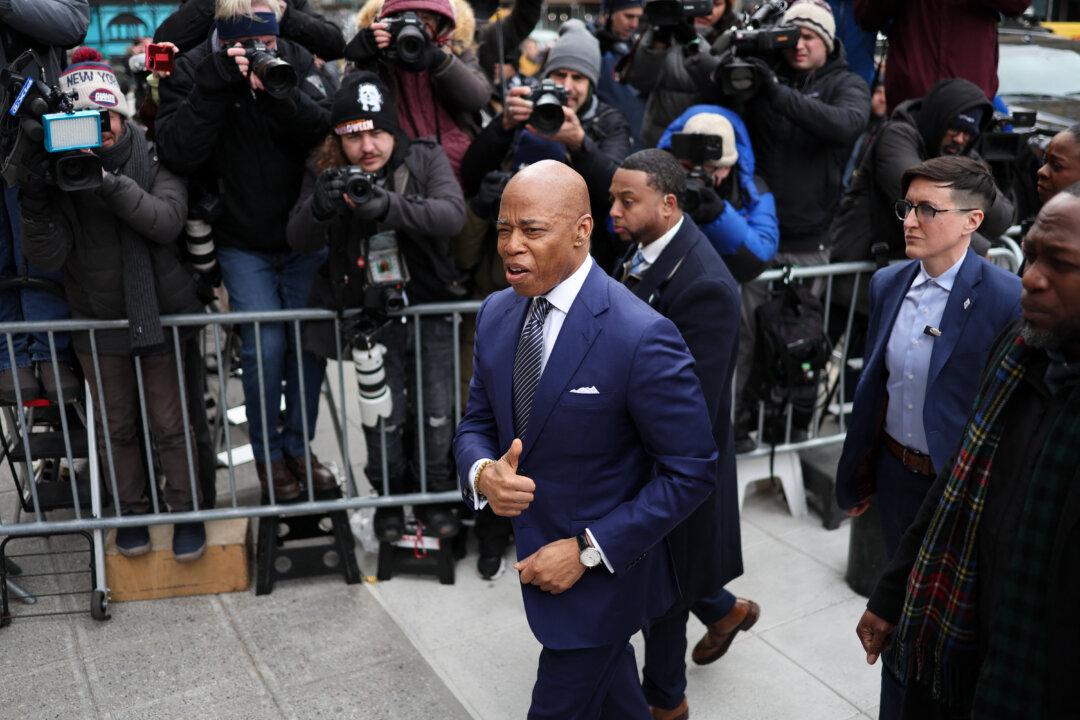Iran-backed militias withdrew from the U.S. Embassy in Baghdad, Iraq on Jan. 1 after security forces fired rubber bullets, tear gas, and stun grenades at the mob of Iraqis who gathered at the compound.
The withdrawal came a day after a mix of protesters and militia members and supporters stormed the embassy’s outer walls, prompting a contingent of U.S. Marines to deploy from Kuwait.
The groups gained access to restricted areas and battered walls and windows but were prevented from getting into the buildings by Iraqi forces, U.S. security forces, and Apache helicopters. Some 100 Marines arrived just before midnight from Kuwait to reinforce the security forces at the embassy.
On Wednesday, demonstrators hurled rocks at the building while security forces fired tear gas and stun grenades in an attempt to disperse them. By mid-afternoon, most of the protesters appeared to have obeyed a call to withdraw, issued by the Popular Mobilization Forces (PMF) umbrella group of mainly Shiite militia, which said the demonstrators’ “message has been heard.”

The group said the demonstrators should withdraw in deference to the Iraqi government which sought “to preserve the prestige of the state.”
The groups were ostensibly protesting the recent U.S. airstrikes of Iran-backed Kata'ib Hezbollah, which were made in retaliation for missile attacks that killed a U.S. contractor at a base in northern Iraq.
Crowds rallied on Tuesday to protest, chanting “death to America,” setting fires, throwing rocks, and smashing surveillance cameras. They breached an outer perimeter wall but did not enter the main compound.

The huge embassy, built along the banks of the Tigris River in central Baghdad’s fortified “green zone” during American occupation following the 2003 invasion that toppled Saddam Hussein, is the biggest U.S. diplomatic mission in the world.
Early reports said U.S. Ambassador to Iraq Matthew Tueller and other personnel at the embassy were evacuated, but the State Department later said that Tueller was on a previously scheduled trip, that he was returning to the embassy, and that everyone inside was safe.
Secretary of State Mike Pompeo said late Tuesday on Fox News that there were no plans to evacuate the embassy or pull out any of the 5,000 troops in Iraq.
“The embassy is being monitored. It’s safe. The actions that we took today were prudent. Under President Trump’s direction, our team worked together today to quickly, decisively, prudently take the appropriate responses to keep our American people safe,” Pompeo said during an appearance on CBS.

Secretary of Defense Mark Esper said the United States was sending about 750 additional troops to the Middle East after Tuesday’s attack on the embassy.
President Donald Trump fired off multiple tweets about the situation on Tuesday, saying the embassy was safe.
“Many of our great Warfighters, together with the most lethal military equipment in the world, was immediately rushed to the site. Thank you to the President & Prime Minister of Iraq for their rapid response upon request,” he wrote in one tweet.
“Iran will be held fully responsible for lives lost, or damage incurred, at any of our facilities. They will pay a very BIG PRICE! This is not a Warning, it is a Threat. Happy New Year!”
Sen. Lindsey Graham (R-S.C.), a top Trump ally, issued a warning to Iran on Twitter: “President Trump, unlike President Obama, will hold you accountable for threats against Americans and hit you where it hurts the most. Choose your battles wisely.”
The Iranian regime’s Supreme Leader Ayatollah Ali Khamenei said in his own tweet that the United States “can’t do anything.”
“If you were logical—which you’re not—you'd see that your crimes in Iraq, Afghanistan... have made nations hate you,” Khamenei added.
“Do I want to? No. I want to have peace. I like peace,” he said. “And Iran should want to have peace more than anybody. So I don’t see that happening.”





